NATIONAL GALLERY | MAP
Here are some of my favorite paintings in the National Gallery. I have ‘curated’ them chronologically. Art can be approached in a myriad of ways and your appreciation of it has as much to do with your mood as anything else. Here are some ideas for understanding art.
Contextual Analysis: This approach involves understanding the historical, cultural, and social background in which the artwork was created. – also provenance.
Personal Interpretation & Emotional Response: This approach emphasizes the viewer’s personal reaction to the artwork and the emotions it evokes.
Technique, Design & Color: This approach focuses on the visual elements and principles of design within the painting itself.
Go early in the day to avoid crowds.
The Arnolfini Portrait, 1432
This must be one of the most famous paintings in the world, and one of the most intriguing. A richly dressed man and woman stand in a private room. Look closely and you can see an astonishing level of detail. There are multitudes of theories about every aspect of this painting. Details such as the snuffed-out candle above the woman, the scenes after Christ’s death on her side of the background roundel, and the black garb of the man, support a popular view that the woman has died. Watch the video or READ MORE.
It was bought by the National Gallery in 1842 for ‘the moderate price’ of 600 Guineas, their first Netherlandish painting.
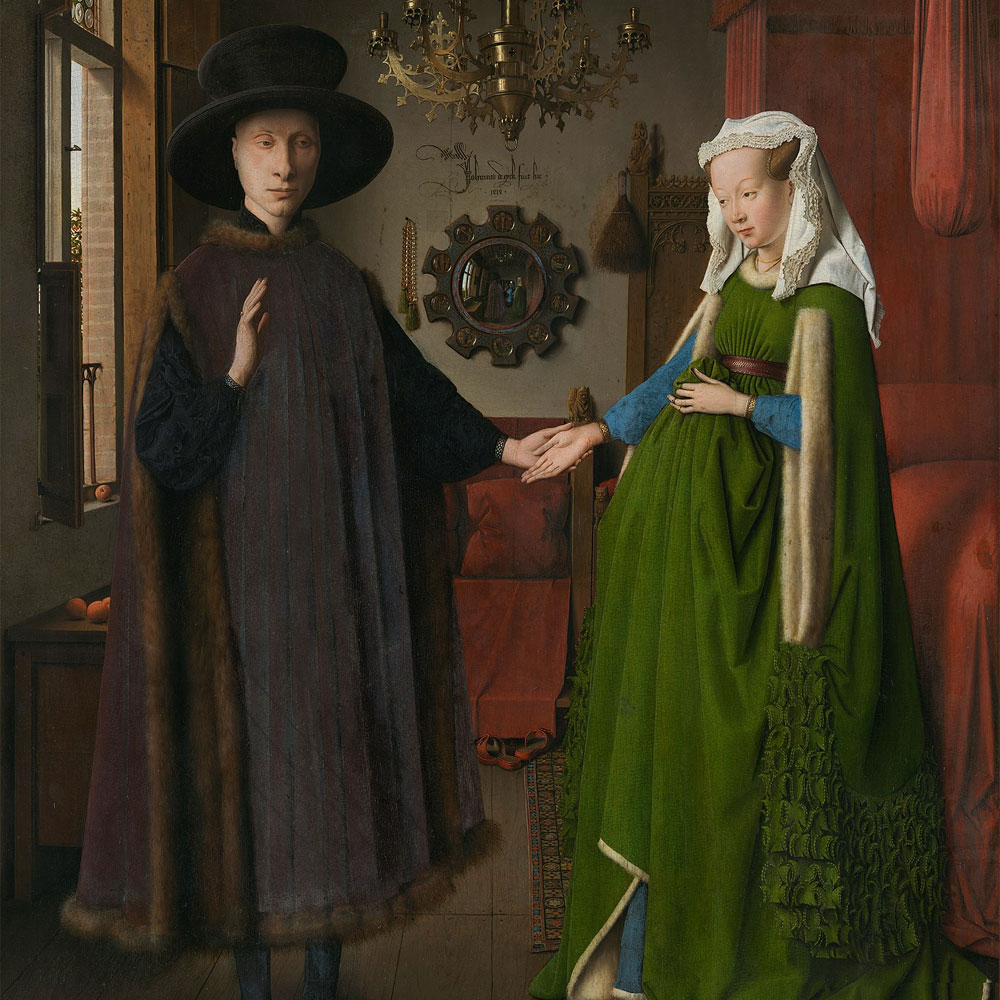
Venus and Mars, c1485
Venus, the goddess of love, looks over at her lover Mars. She is alert and dignified, while he – the god of war – is utterly lost in sleep. Probably intended to adorn the bedroom of a bride and groom. The clear implication is that the couple have been making love; the male habit of falling asleep after sex was a regular subject for ribald jokes in the context of weddings in Renaissance Italy.
My interpretation, which has not changed in 25 years, is that she is looking over at him thinking, ‘Really? Is this all there is?’.
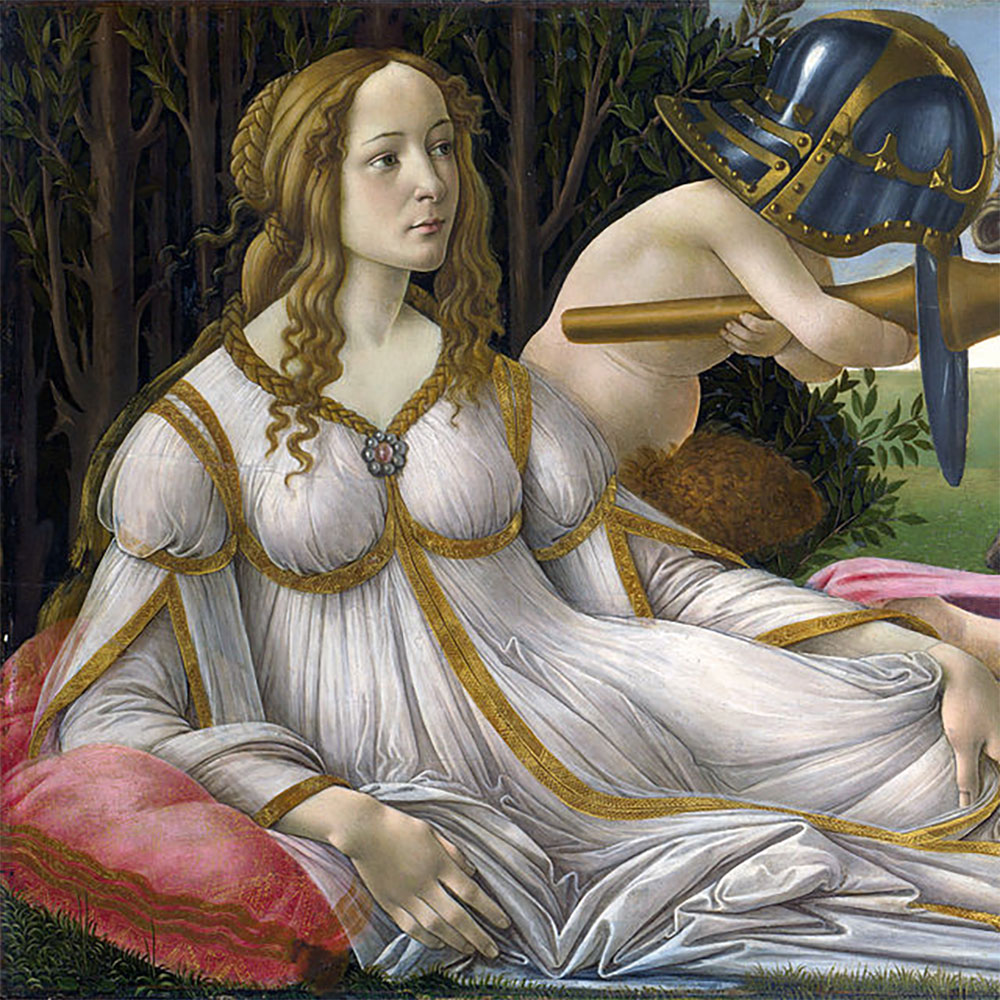
Bacchus and Ariadne, 1520-3
Bacchus, god of wine, emerges with his followers from the landscape to the right. Falling in love with Ariadne on first sight, he leaps from his chariot, drawn by two cheetahs, towards her. Ariadne had been abandoned on the Greek island of Naxos by Theseus, whose ship is shown in the distance. The picture shows her initial fear of Bacchus, but he raised her to heaven and turned her into a constellation, represented by the stars above her head.
A beautiful story of love, loss & wine. And the subject of one of our favorite operas, Ariadne auf Naxos by Richard Strauss.

The Ambassadors, 1533
Hans Holbein the Younger | ROOM 4
“The Ambassadors,” painted by Hans Holbein the Younger in 1533, is an absolutely virtuosic, gorgeous portrait of Jean de Dinteville and Georges de Selve, two French courtiers visiting England. The painting is renowned for its intricate details, symbolic objects, and most famously, a distorted anamorphic skull that only becomes visible when viewed from a specific angle.
One of the most fascinating features of the painting is the year in which it was painted, 1533. Henry VIII formally marries Anne Boleyn, crowns her Queen of England and her daughter, the future Elizabeth I, is born. So a great deal for these ambassadors of France to write home about! Definitely watch the video.
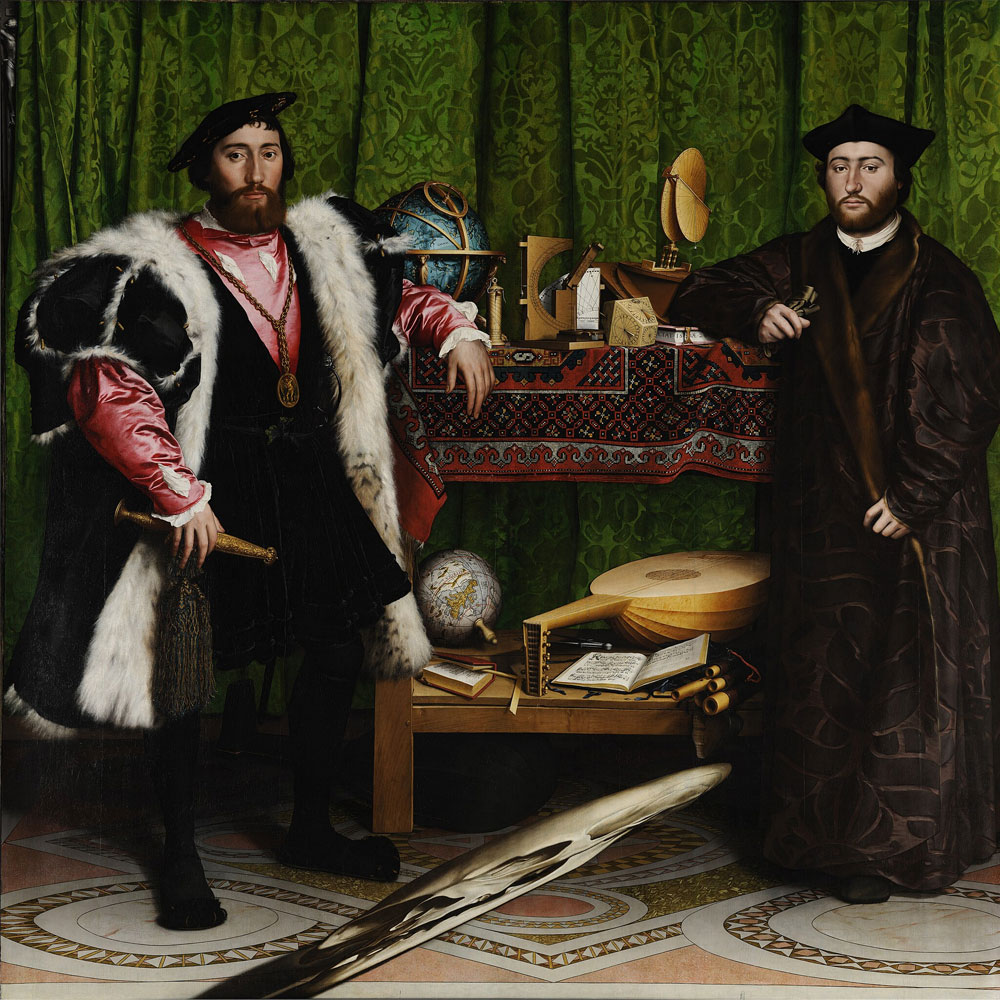
Christina of Denmark, Duchess of Milan
Hans Holbein the Younger | ROOM 11 (She is moved about sometimes)
The one that got away! This elegant young woman is Christina of Denmark, the youngest daughter of King Christian of Denmark and widow of the Duke of Milan since age 1. In 1538, King Henry VIII of England was looking for a fourth wife, after the death of Jane Seymour the previous year. As Henry’s official court artist, Holbein was sent to Brussels to capture the 16-year-old Christina’s likeness.
Christina was aware of Henry’s earlier mistreatment of his wives. She is reported as saying, “If I had two heads, I would happily put one at the disposal of the King of England”, most likely apocryphal but a pithy reply. Henry kept Christina’s beautiful portrait until his death in 1547 – and wouldn’t you? I could stare at this all day… Definitely watch the video.
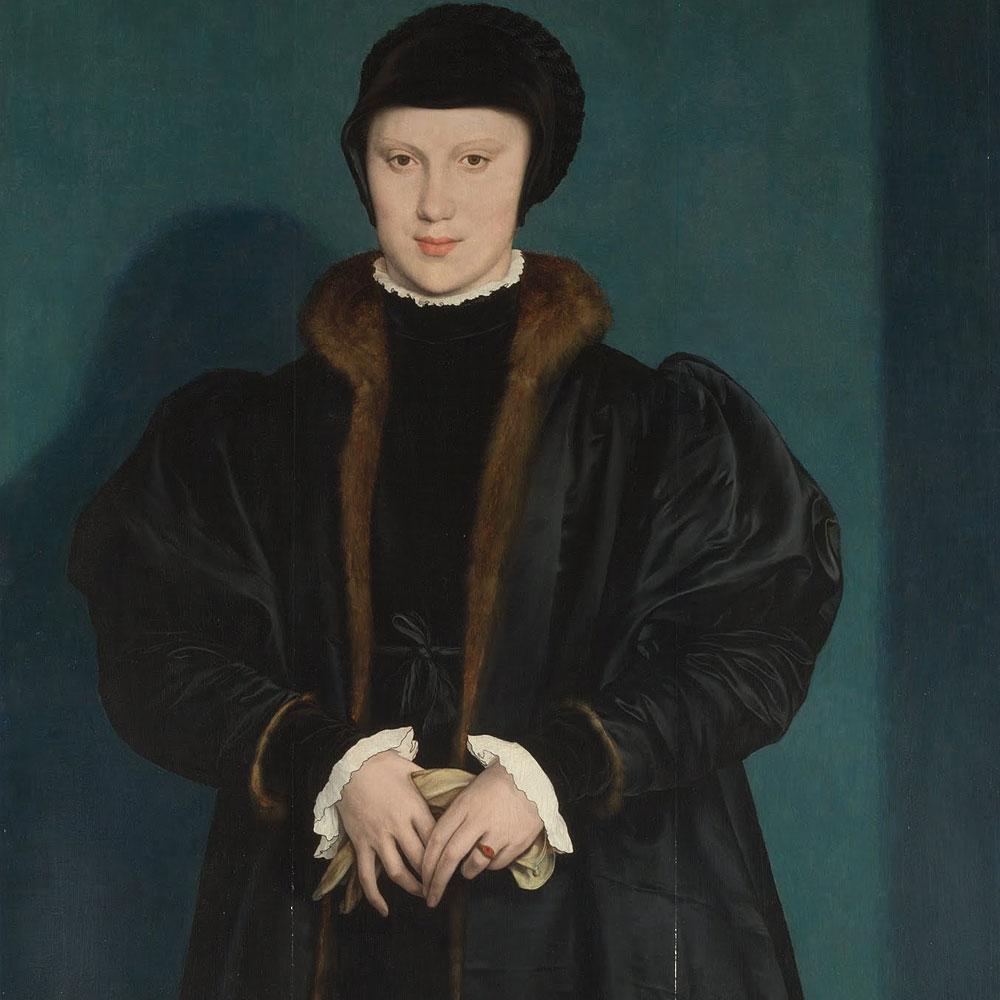
The Toilet of Venus (‘The Rokeby Venus’), 1647-1651
Venus, the goddess of love, reclines languidly on her bed, the curve of her body echoed in the sweep of sumptuous satin fabric. The pearly tones of her smooth skin contrast with the rich colors and lively brushstrokes of the curtain and sheets.
Velázquez’s only surviving female nude has been the object of vandalism twice. In 1914, the suffragette Mary Richardson attacked Velázquez’s canvas with a meat cleaver. The painting was attacked again in 2023 by Just Stop Oil activists who smashed its protective glass with hammers. The feminist organization, The Guerrilla Girls, famously asked the question; ‘Do Women Have To Be Naked To Get Into the Met Museum?’ Less than 5% of the artists in the Modern Art Section are women, but 85% of the nudes are female.
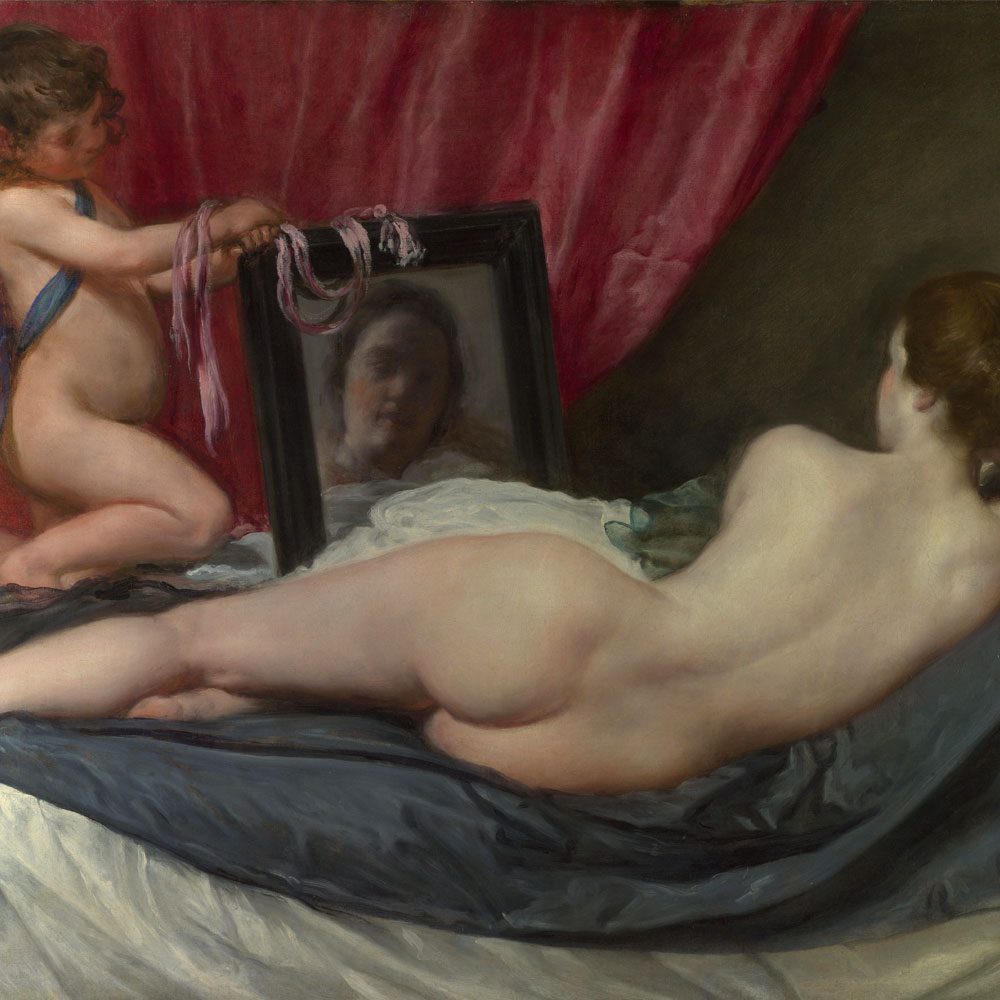
A Young Woman standing at a Virginal, 1670-2
The young woman at the keyboard holds our eye with a direct gaze. The empty chair suggests she is expecting someone and the large painting of a naked Cupid, the god of erotic love, on the wall behind her may be a signal that she is waiting for her lover.
There has been much speculation that this picture and another by Vermeer, A Young Woman Seated at a Virginal, might have been made as a pair. There are many similarities between the two, but also an apparent contrast. One may represent fidelity, the other a venal, mercenary approach to love.
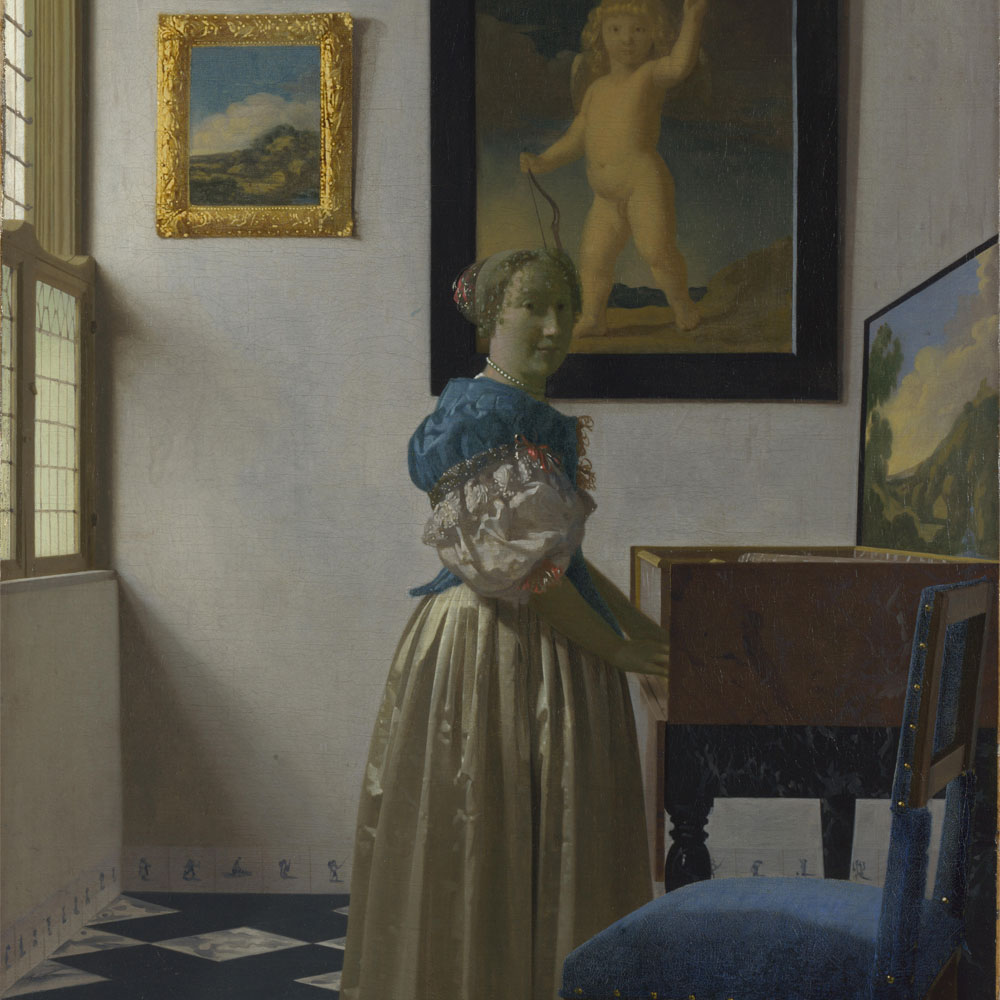
A Young Woman seated at a Virginal, 1670-2
It appears to be dark outside this elegant room: a blue curtain covers the top part of the window, but the glass below it is black. The light which glints in the heavily dilated pupils of the woman seated at the keyboard comes from in front of the painting, an unusual effect for Vermeer.
Significantly, the picture hanging on the wall shows a prostitute flirting with a client. Vermeer tended to fill his paintings with uncertainties, but here the background picture gives an unusually strong hint, which encourages us to wonder if the keyboard player has more than music on her mind.
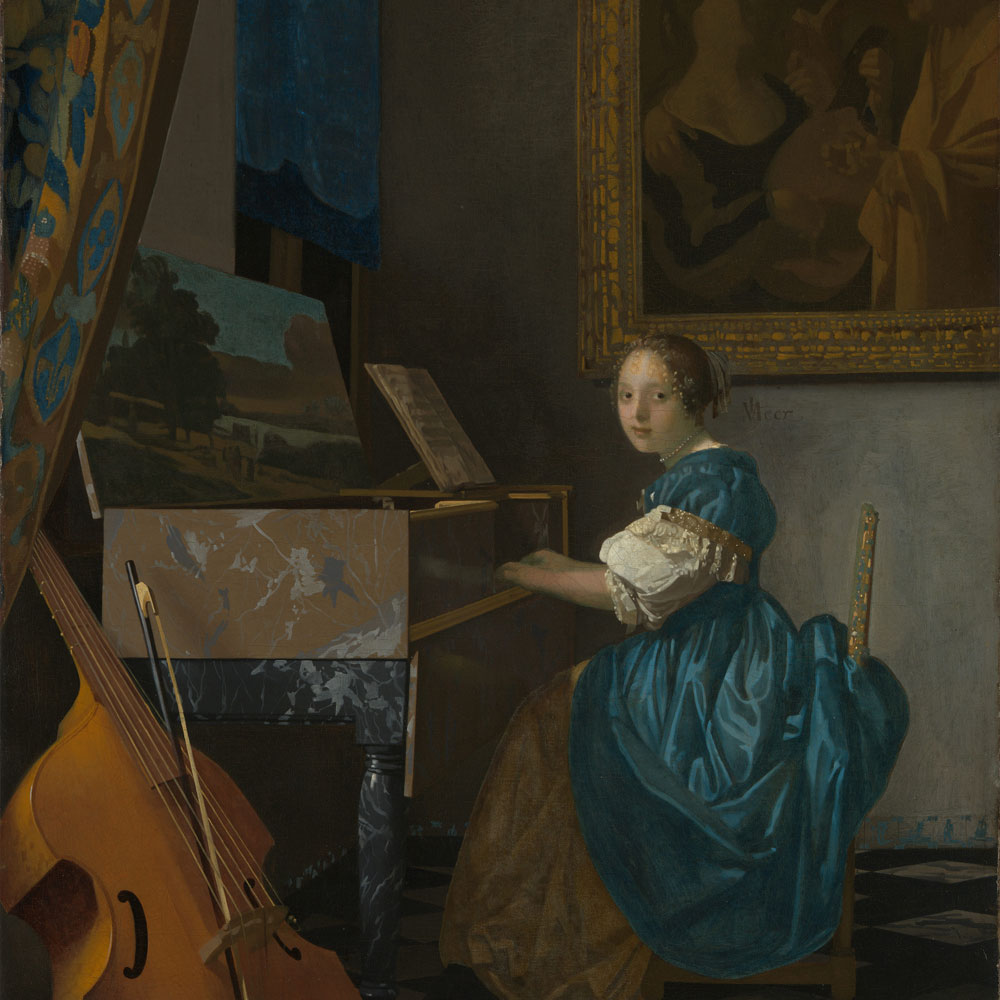
Mr. & Mrs. Andrews, c1750
Oh, these two… This double portrait of a recently married couple was painted around 1750 by Thomas Gainsborough. But what a strange portrait it is. An unsmiling, well-bred couple poses self-consciously beside their fertile harvest field and well-stocked pastures. Her skirts are almost as wide as their vast tracks of land. Their married life seems a bit empty and dreary.
Well, Gainsborough may have been mocking them. And about a subject that is dear to Jane Austen’s heart. The many and various ‘Enclosure Acts’ consolidated land holdings to create landscaped parks for the wealthy, driving the poor off the land. For a thoughtful perspective, watch this video from Waldemar Januszczak. I have also provided the National Gallery’s video.
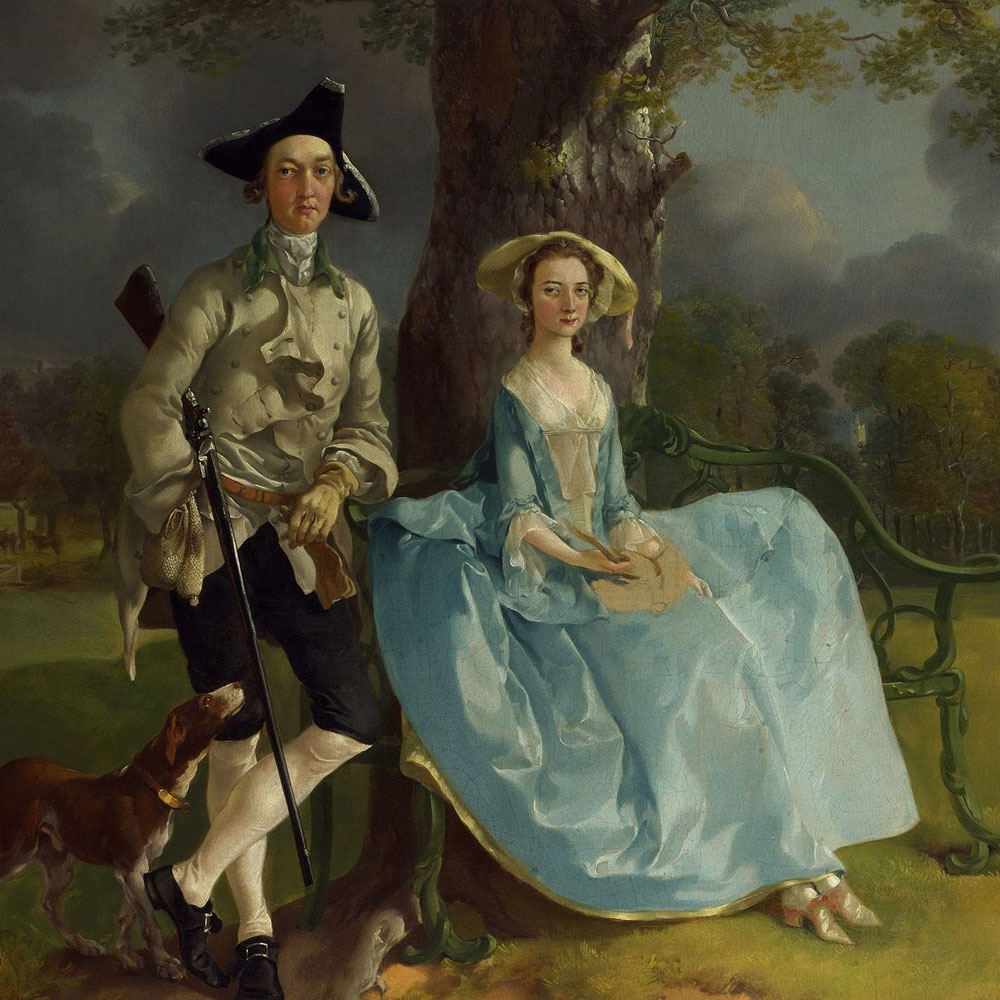
The Painter’s Daughters chasing a Butterfly, c1756
This portrait always reminds me of my own sister. And oddly of the small-pox vaccine, which will not be invented for another 40 years. The two little girls in this unfinished portrait are Mary and Margaret, Gainsborough’s daughters by his wife, Margaret Burr, and their only children to survive infancy.
Margaret and Mary run hand-in-hand through dark woodland in pursuit of a cabbage white butterfly, which has landed momentarily on a tall thistle. Margaret reaches out her hand, while Mary clutches her looped-up muslin apron as a net. The children’s attempt to catch the elusive butterfly may be intended to suggest the fleeting nature of childhood, and the fragility of children’s lives. The wood in Gainsborough’s picture is dark and sombre.
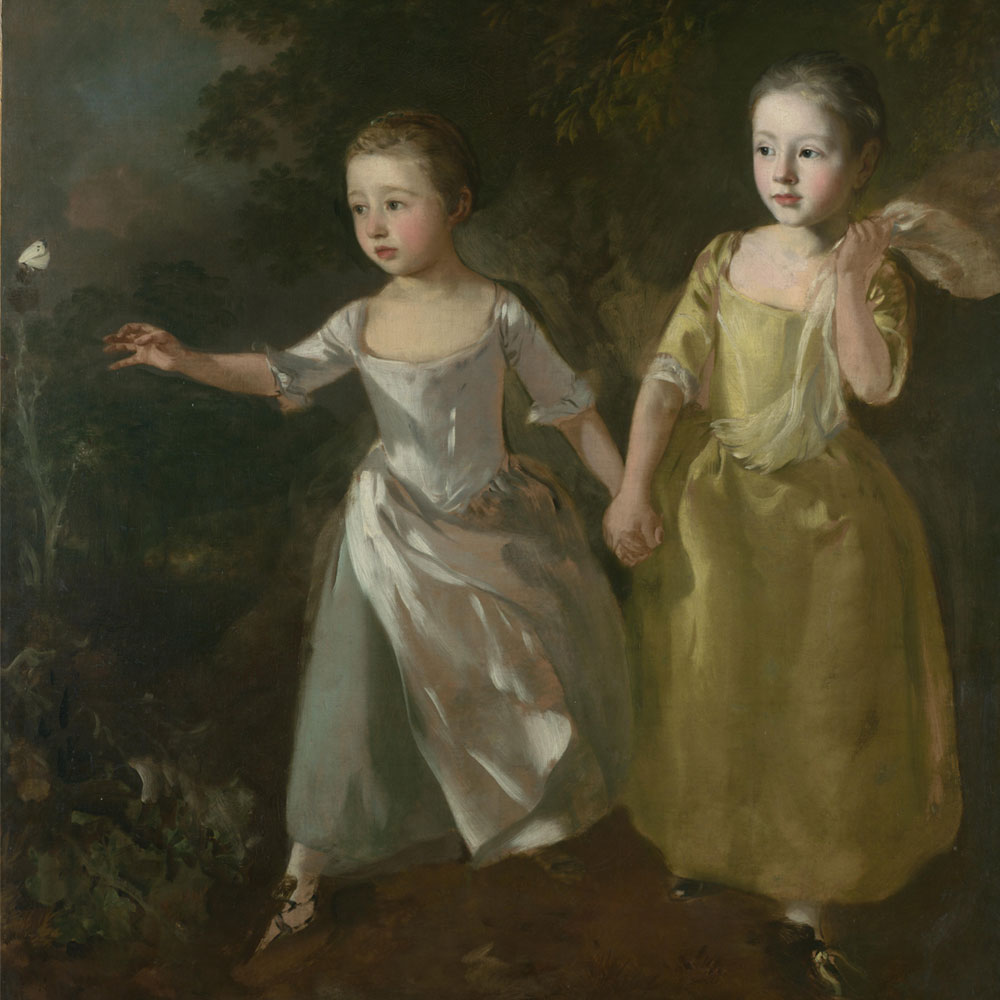
An Experiment on a Bird in the Air Pump, c1758
Joseph Wright ‘of Derby’ | ROOM 34
At the height of the The of Enlightenment, an audience has gathered around a lecturer to watch an experiment. It is night, and the room is lit by a single candle that burns behind a large rounded glass containing a diseased human skull. A white cockatoo has been placed in a glass container from which the air is being pumped to create a vacuum. Will the lecturer expel the air completely and kill the bird, or allow the air back in and revive it? Wright focuses on the viewers‘ differing reactions – from the girl unable to watch to the lovers with eyes only for each other.
It captures the drama of a staged scientific experiment but it also functions as a vanitas – a painting concerning the passing of time, the limits of human knowledge and the frailty of life itself.
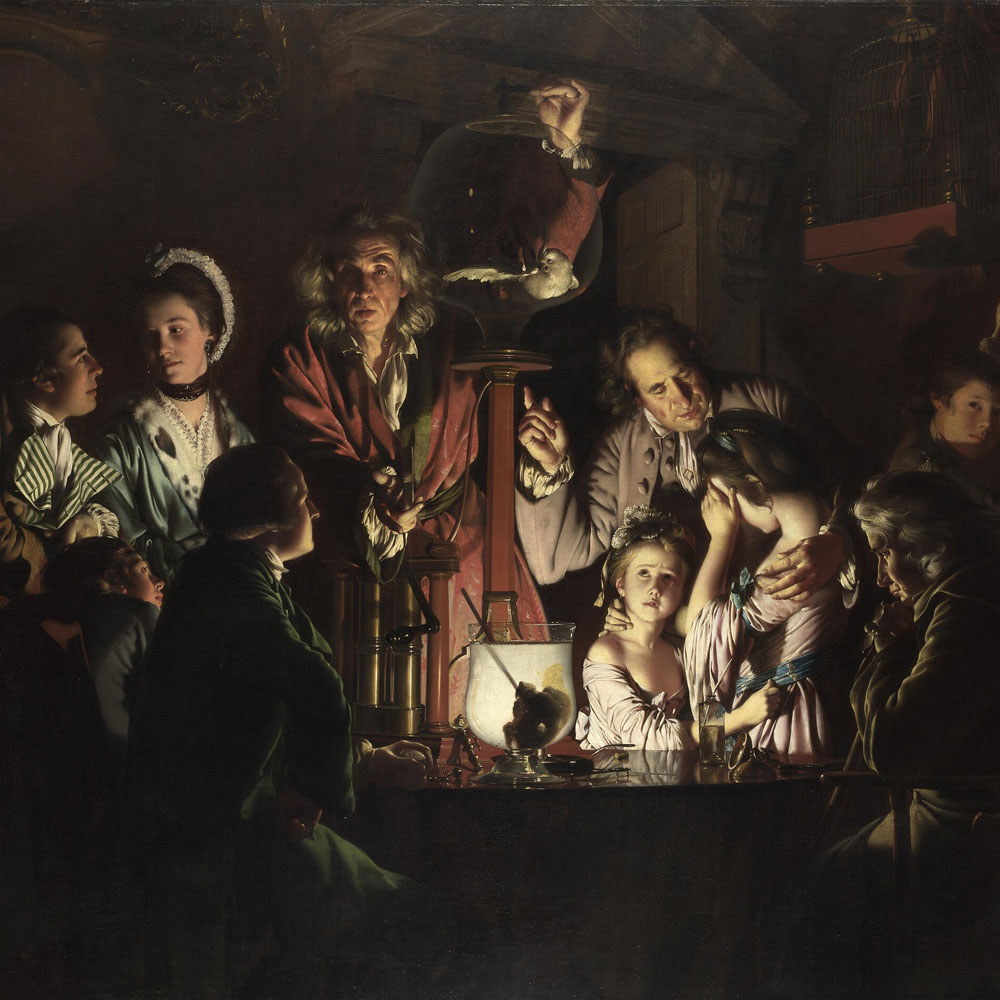
The Execution of Lady Jane Grey, 1833
Lady Jane Grey reigned for just nine days as Queen of England following the death of Edward VI in 1553: she was deposed by the faction supporting Edward’s half-sister and heir, Mary Tudor. Tried for treason, the 17-year-old Lady Jane was beheaded at Tower Hill on 12 February 1554.
Delaroche shows the final moments of the blindfolded Lady Jane as she pleads, ‘What shall I do? Where is the block?’ She is being guided towards it by Sir John Brydges, Lieutenant of the Tower. In this exquisitely-rendered painting, Delaroche plays up the spectacle of the innocent young victim on the brink of martyrdom, compelling us to react to the scene before us.
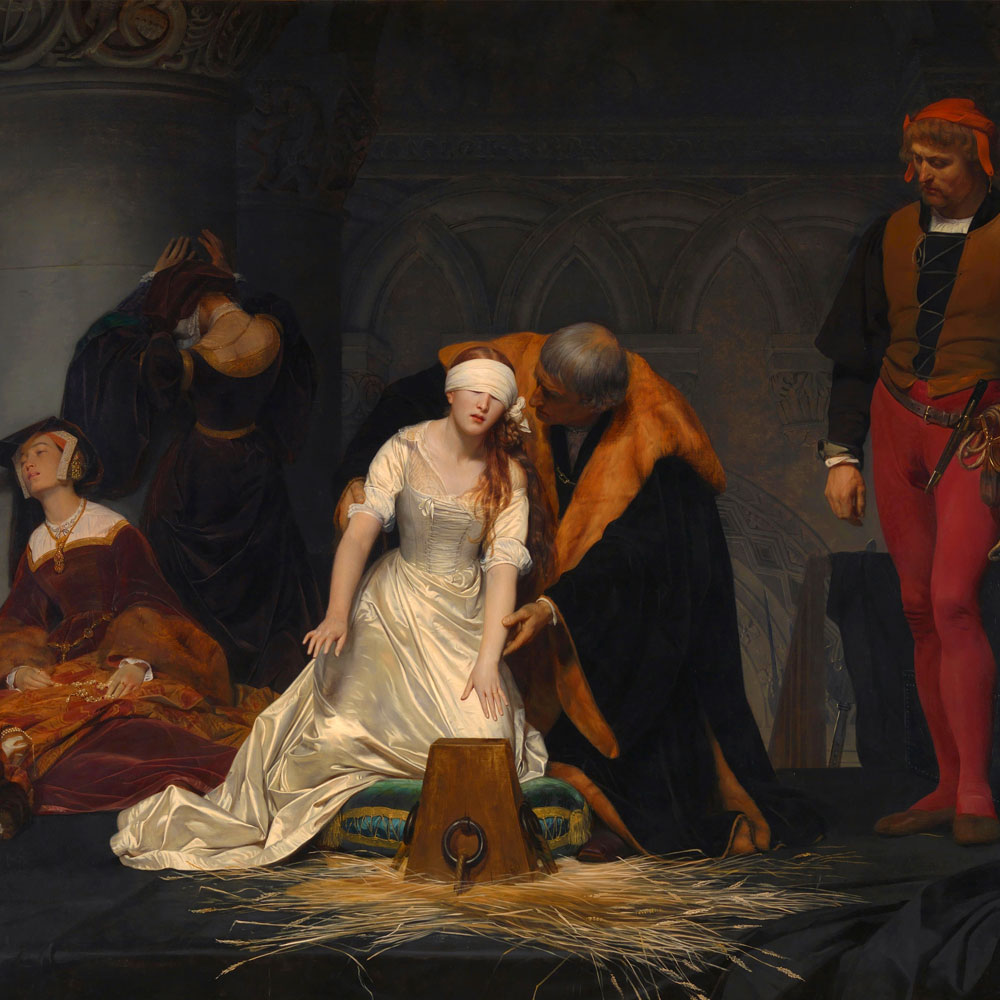
The Fighting Temeraire, 1839
Joseph Mallord William Turner | ROOM 40
The Fighting Temeraire is a painting by the English artist JMW Turner, depicting the 98-gun HMS Temeraire, a veteran of the Battle of Trafalgar, being towed up the Thames by a paddle-wheel steam tug to be broken up for scrap. The ghost-like ship glides silently in stately splendor, wrapped in a rising mist. The beauty of the old ship contrasts with the dirty blackened tugboat with its tall smokestack, which churns the otherwise still surface of the river.
It is unlikely that Turner witnessed the ship being towed; instead, he imaginatively recreated the scene using contemporary reports. Set against a blazing sunset, the last voyage of the Temeraire takes on a greater symbolic meaning, as the age of sail gives way to the age of steam.
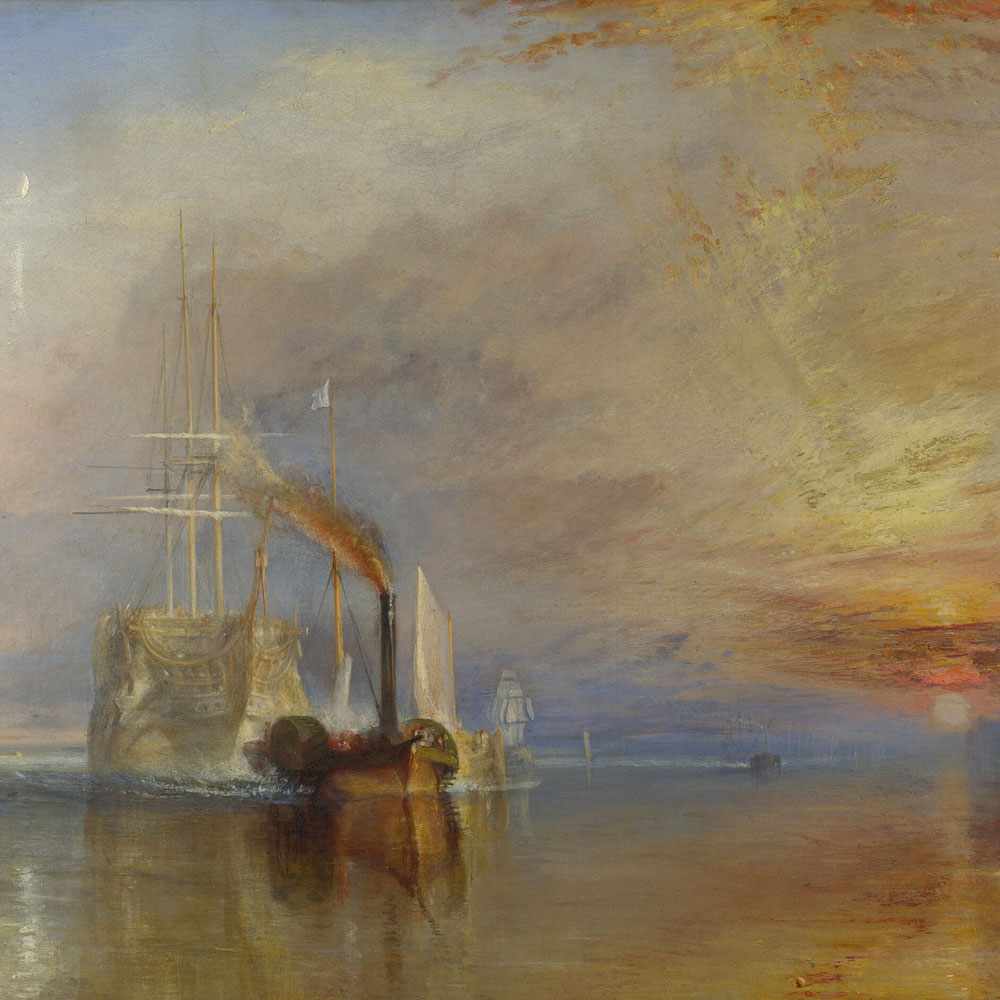
Rain, Steam and Speed – The Great Western Railway, 1844
Joseph Mallord William Turner | ROOM 40
This is my favorite painting in the museum and Turner is my favorite painter. A steam engine comes towards us as it crosses the Maidenhead Railway Bridge in the rain. For me, this painting is more of an experience, a vortex of experiences, of sensations. We could be passengers on the train. If you look closely, you’ll see there was no roof. This is third-class compartment. Imagine everything that would be coming at you, all the excitement and anxiety, the wind rushing into your face, taking your breath away, you can barely breathe, barely speak. Imagine the rain lashing against your face, sliding down your face, the taste of the rain in your mouth, the grit and taste of the coal, the soot in your eyes.
On the river on the left, you can see a small boat and, barely visible near the right edge of the picture, a man drives a horse-drawn plough. Both the boat and the plough are examples of relatively slow, non-mechanized activity. Both are turned in the opposite direction of the train. Across the river is a group of classical figures into the landscape. They might instead be a nod to the new trainspotters who have come out to wave at the train as it goes past.
Imagine the sounds: of the screams of the gale, the storm, the thundering of the train on the tracks as it comes towards you. Imagine the light changing dramatically as the showers move through a fragile sunlight, flickering through the clouds. All around are the elements: earth, air, fire and water.
The fastest creature in Britain at this time was the hare with a top speed of 55mph – the same top speed of the trains in 1844. Turner lightly brushed in a hare roughly midway along the rail track to represent the speed of the natural world in contrast to the mechanized speed of the engine. The animal is now invisible as the paint has become transparent with age. It is a bit like a fairy – if you believe it is there, you will see it. Imagine being the hare racing for its life on the track, new sounds, new smells, new threats – nature against man.
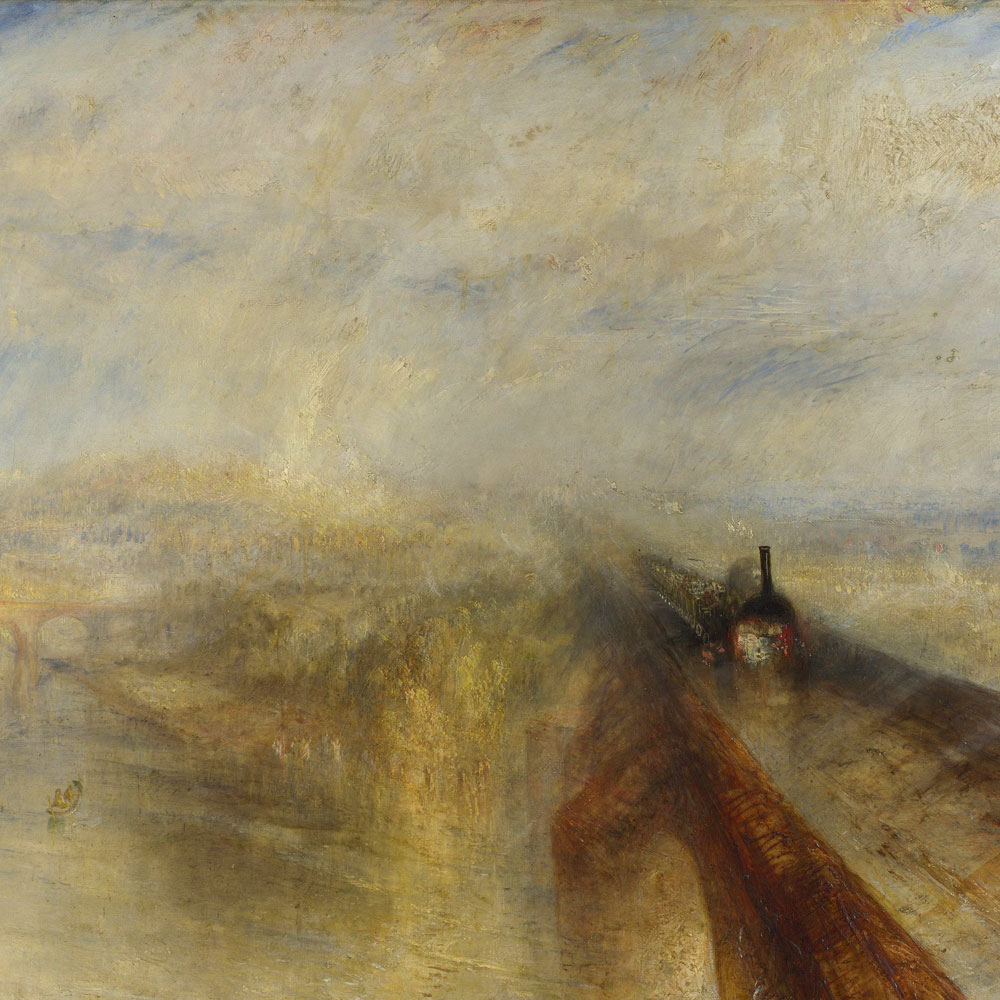

So there isn’t a single perspective in this painting, nor is it a moment in time. The past, present and future are hurtling directly at you.
Sunflowers, 1888
When Gauguin agreed to visit Arles in 1888, Van Gogh hoped for friendship and to realize his idea of an artists’ collective. Van Gogh prepared for Gauguin’s arrival by painting four versions of Sunflowers in one week. “In the hope of living in a studio of our own with Gauguin,” he wrote in a letter to Theo, “I’d like to do a decoration for the studio. Nothing but large Sunflowers.”
Their relationship began to deteriorate after only two months. After an altercation on the evening of 23 December 1888, Van Gogh returned to his room where he seemingly heard voices and either wholly or in part severed his left ear with a razor. Certainly not the take-away of this painting, of course, but the association is interesting. (FYI – Many Brits pronounce his name van-goff)








